| Oslo, the Capital, was our first stop |
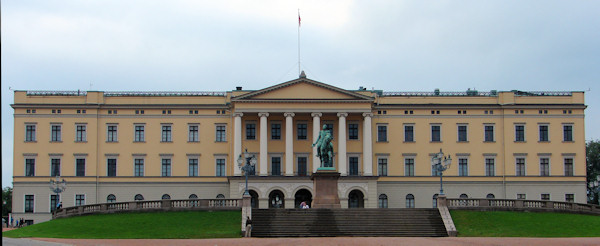 | Norway
is a country of about 4.9 million people, and it is a
constitutional monarchy. King Harald V (closely related to the
British royal family) lives in this palace in Oslo. It is an easy
walk from the center of town. |
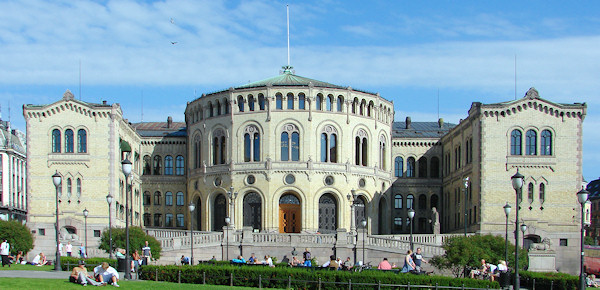 | The
national capital is located in the heart of Oslo. This Storting
(national parliament) building overlooks a huge square. In
contrast to the US, everything seems to be fairly open, with guards
visible but pretty casual. |
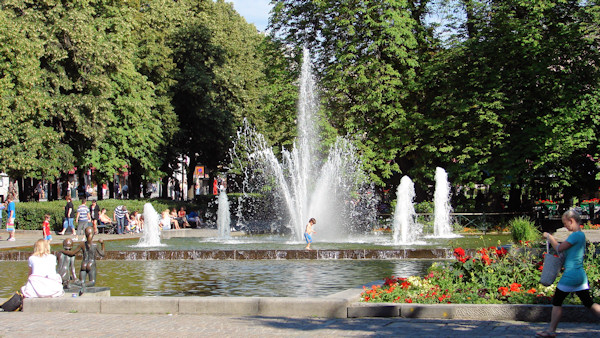 | At the far end of the square, we have a fountain. The kids love it! |
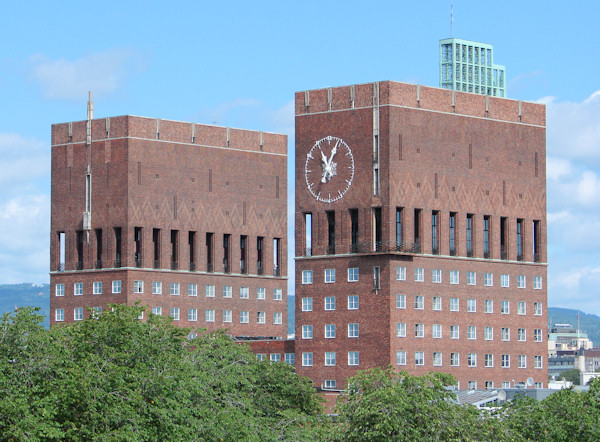 | City
Hall towers over the port of Oslo, but it really isn't a terribly
attractive building. Its 49-bell carillon stands out above the
eastern tower. This building's construction began in 1933, but
there was a 7-year interruption for WW2. |
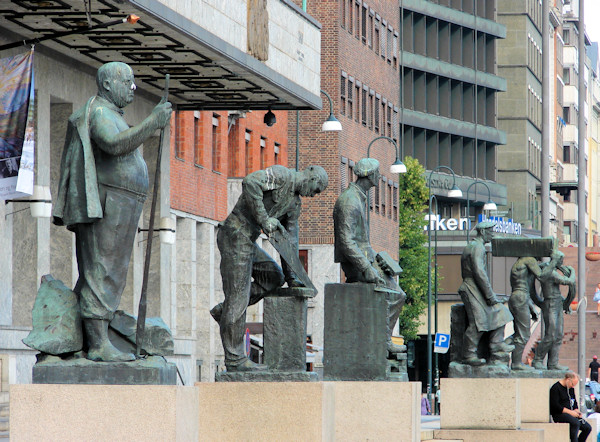 | At the base of City Hall, an array of bronze sculptures, all by Gustav Vigeland, face the water. |
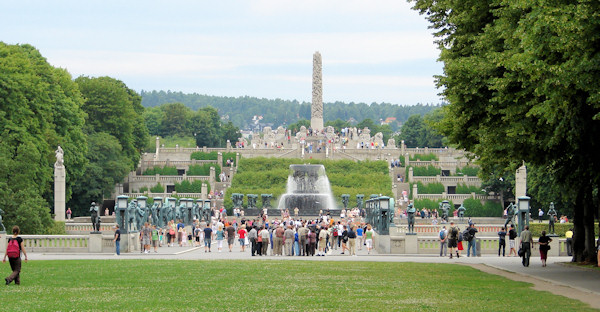 | It is clear that Gustav Vigeland is Oslo's favorite sculptor.
Toward the north part of town, 80-acre Frogner Park is more
commonly known as Vigeland park because it is graced with 212 of his
works in bronze and granite. It is clear he likes to sculpt
people. |
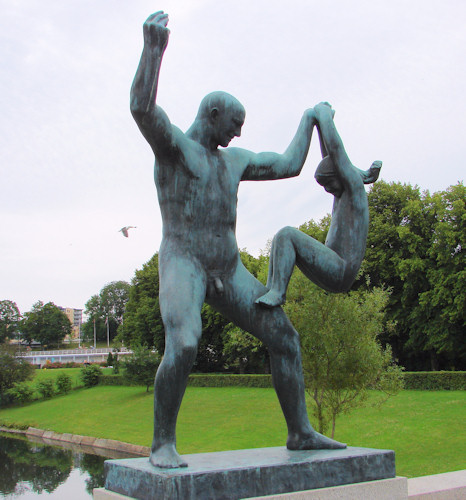 | One of Vigeland's bronzes, which I suppose is a father and son. |
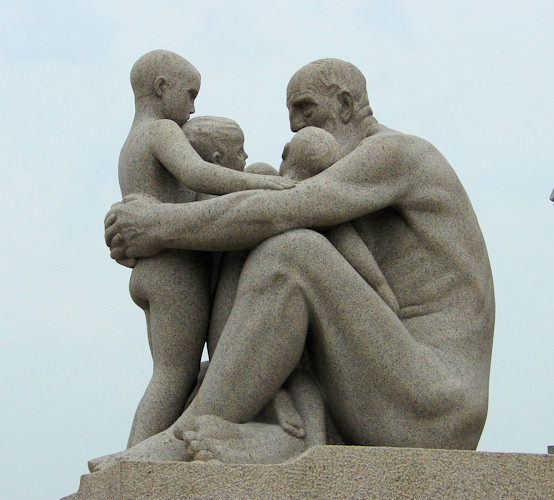 | This
sculpture, in granite, looks more like a grandfather. Vigeland is
almost brutal in his portrayal of people of all ages. |
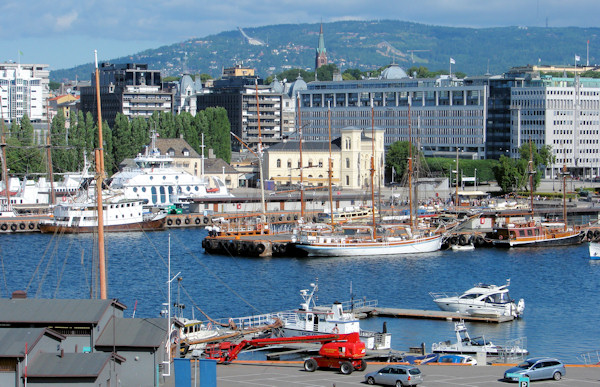 | This
view of Oslo's harbor shows a lot of ferries. All through this
trip, we saw that ferries are really important links among the various
islands.
In the center of the shot is a white building, which is
the Nobel Peace Prize Museum. The Peace Prize is awarded in Oslo,
actually in the city hall above. All the other Nobels are awarded
in the Stockholm City Hall.
Above the museum, high in the hills, you can see a ski jump. |
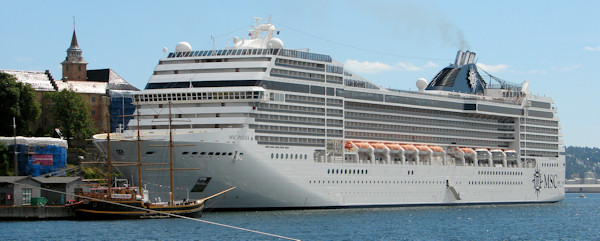 | Oslo is also
a cruise ship destination. This is the MSC Poesia, which dumped
2550 passengers into the city. This is the other side of the
harbor, and notice the tower beyond Poesia's bow. |
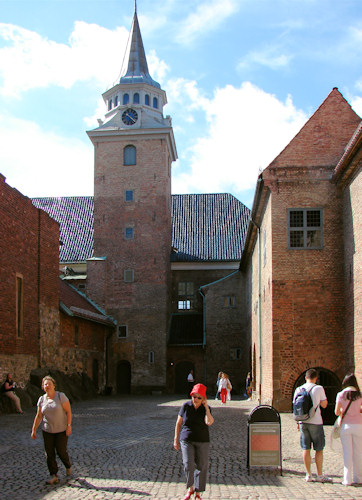 | That
tower is Oslo's castle. Its construction was begun before 1300,
and it was expanded in Renaissance style in the 17th century. At
this stage, it looks pretty benign, but it has a commanding position
with respect to the city's harbor. Also, that red hat really
helped me keep track of Janet. |
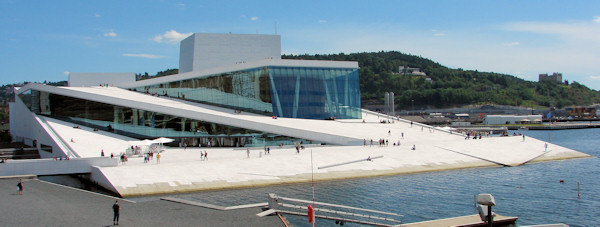 | The
Oslo Opera, designed by the firm Snøhetta, was completed in 2007.
It is small by US standards, because the main hall seats just
under 1400 people. However, the stage is awesome, with as much space
above, below, to the left and to the right as there is behind the
proscenium. There is a small hall that seats 400, and the
structure is used by both the National Opera and the National Ballet.
The water is the tip end of the Oslofjord. |
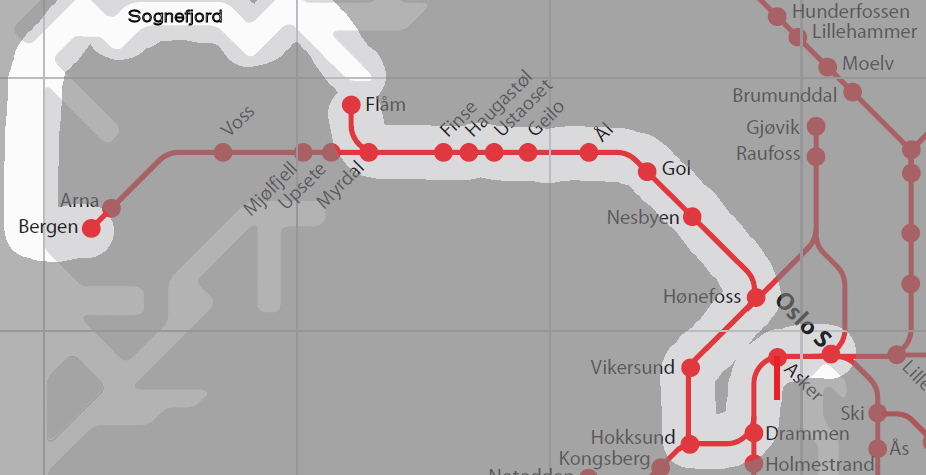
Our trip from Oslo to Bergen, by train and by boat. |
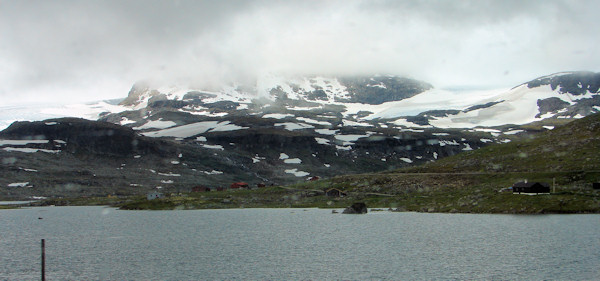 | Oslo,
lying on the Oslofjord, is essentially at sea level. The
first part of our train trip was verdant and green, but soon we
got into the mountains. Here we found lakes and glaciers. |
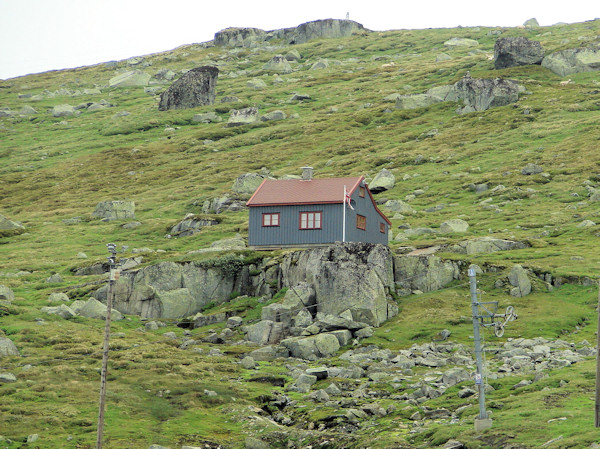 | Even in the heights, there were signs of life. Sometimes pretty sparse. |
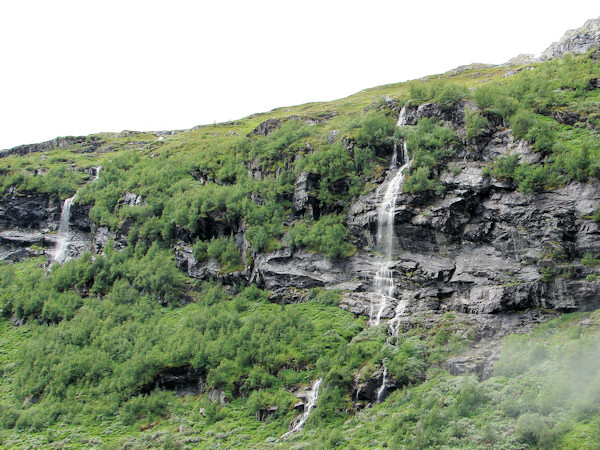 | The
trip between Oslo and Bergen is listed among the 25 best train rides in
the world. Scenes of lakes, mountains, glaciers and waterfalls contributed
to that honor. |
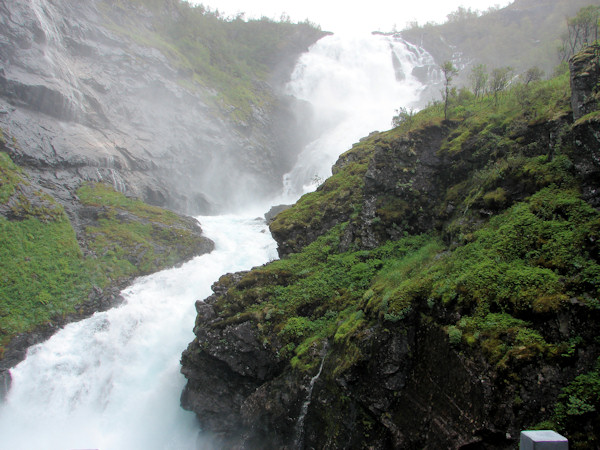 | Another
one of the 25 best rides is the Flåm Railway. In its short 12
miles, it goes from an elevation of 2840 feet down to sea level.
Along the way it passes through 20 tunnels, and one contains a 180°
turn.
The
train made one stop, so everyone could get out to see the Kjosfossen
Waterfall. It has a free fall of 305 feet, and they played a
Wagner aria above the roar. |
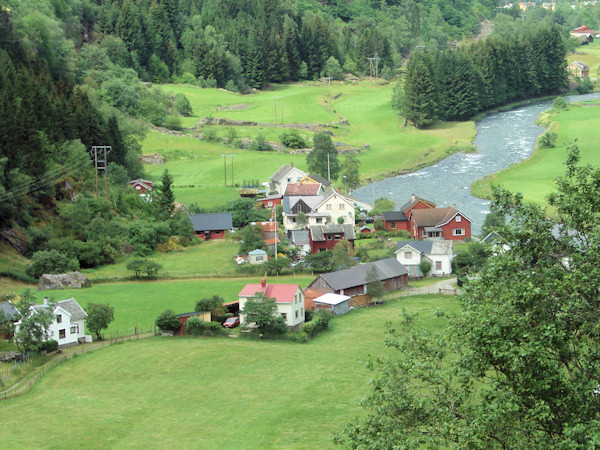 | As we got near the bottom of the Flåm Railway, we saw this little village, presumably a suburb of Flåm, population 450 (or fewer). |
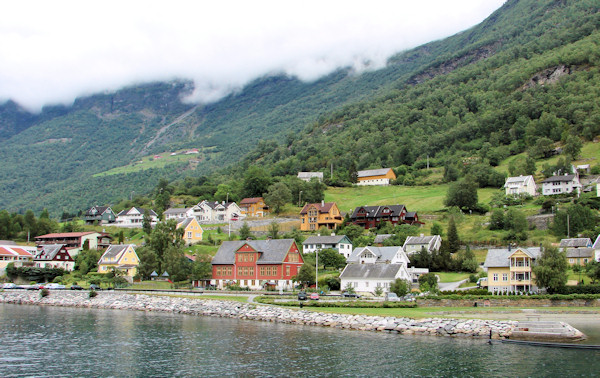
| From Flåm,
we took a boat that traveled the 125 miles of the Sognefjord, making
stops every now and then to take passengers on or let passengers off.
This is one of those villages, called Aurlandsvangen, with a population of around 540. |
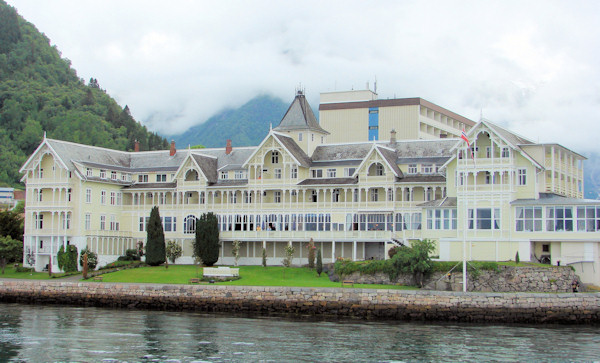 | Balestrand
is a major stop along the Sognefjord. Part of the reason is the
Viknes Hotel. This was a guest house in the 18th century,
but Ole Viknes bought it in 1877. The family continued to
enlarge and upgrade the property through the balance of the 19th
century, and Ole's descendants continue to operate the property.
This is where Kaiser Wilhelm II was staying when World War
I broke out. |
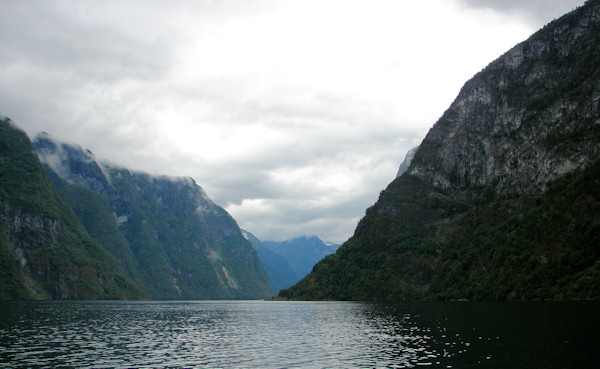 | While the Sognefjord is the "main line," there are a lot of branches. Here, we are looking into the Naerofjord. |
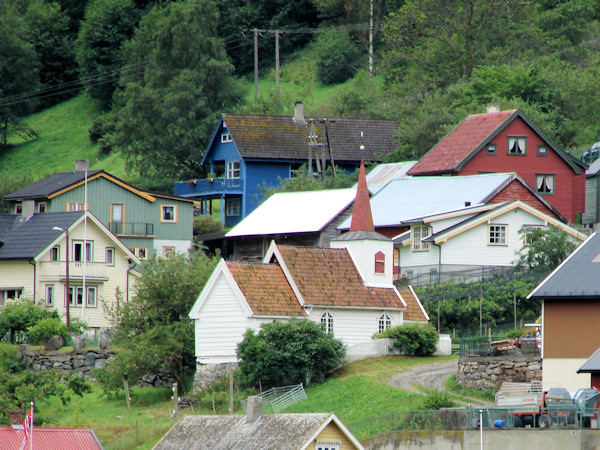
| Norway is famous for Stave Churches, a mode of construction
particularly suited to the climate and the available materials.
We had serious plans to get up close to one of these historical
structures outside Oslo, but the weather was sour. Consequently,
this is about as close as we got. This is the stave church in the
village of Undredal, and it goes back to 1147. |
| Bergen - A Hansiatic Town |
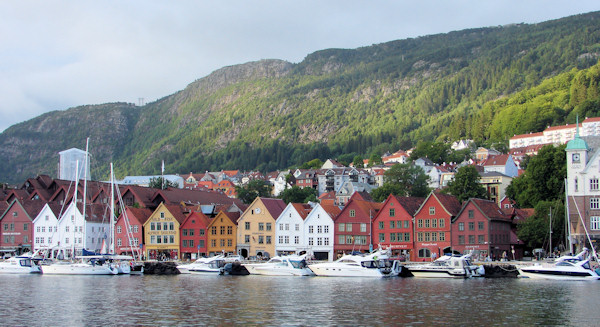 | Bergen
has been a trading town since the 11th century. Based on that
trade, it became the largest city in Norway, and remained the largest
until about 1830.
By the end of the 13th century, Bergen was one of the most important Hansiatic trading cities. This is a view of the Bryggen,
which was exclusively occupied by Hansiatic traders. Because of
major fires, about one every century or two, much of what we see today
is reconstruction. |
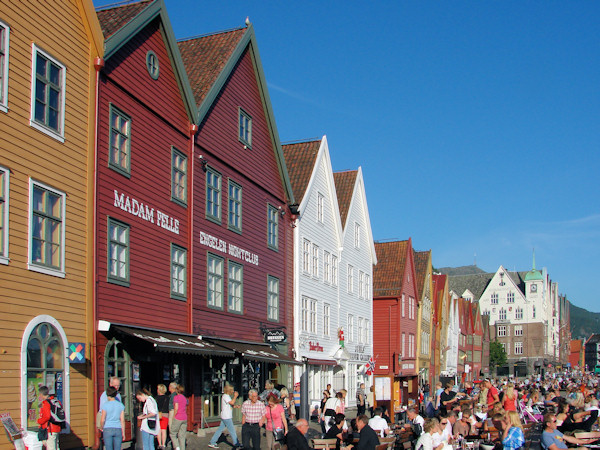 | When the cruise ships are in town, the Bryggen gets filled with people, big time. |
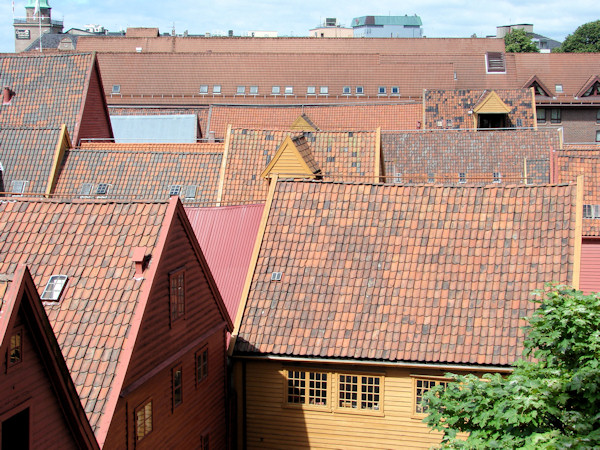 | From our hotel room, the Bryggen looks like so many red roofs, but we were not staying in a Red Roof Inn. |
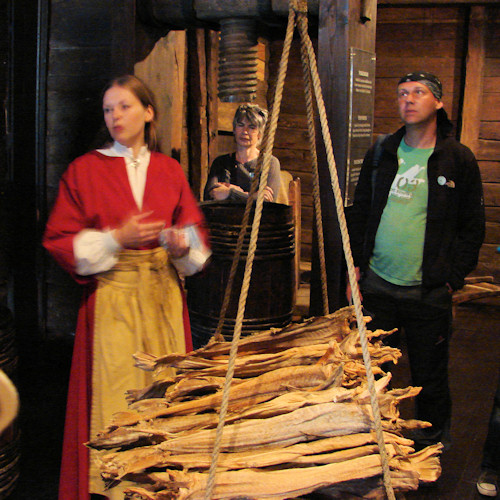 | The city historical commission offered docent-led tours of the Bryggen,
and our docent is explaining how dried codfish formed the backbone of
Bergen's prosperity from about 1100 onward. This was one of the
Hansiatic trading rooms.
|
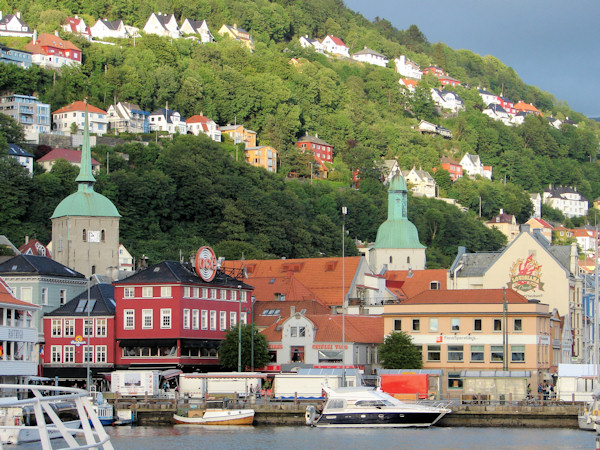 | Bergen
is nestled between steep hills, clearly visible at the head of the old
harbor. The Bergen Cathedral appears near the center of this view. |
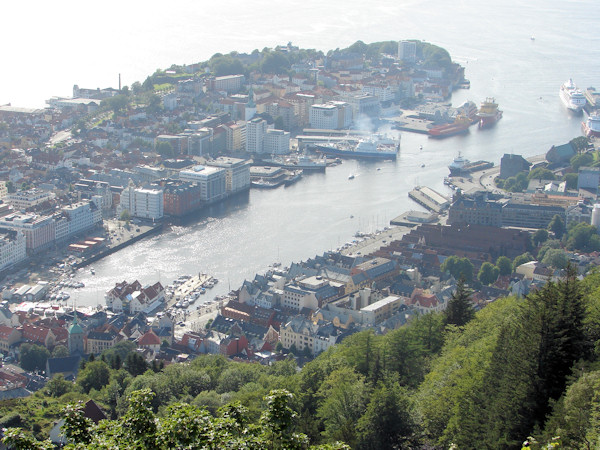 | A
funicular carries people 1000 feet above the city, on Mount Floyen.
The old harbor clearly looks the part, and there is one cruise
ship still docked on the right. The day we were in Bergen, five
cruise ships were in, and we couldn't close to the funicular until their passengers had re-boarded. |
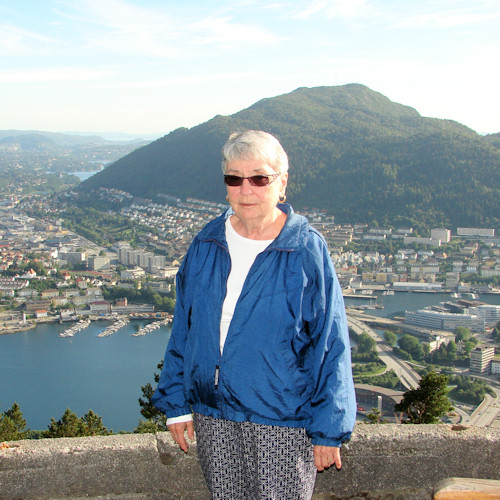 | And here is Janet on Mount Floyen. |
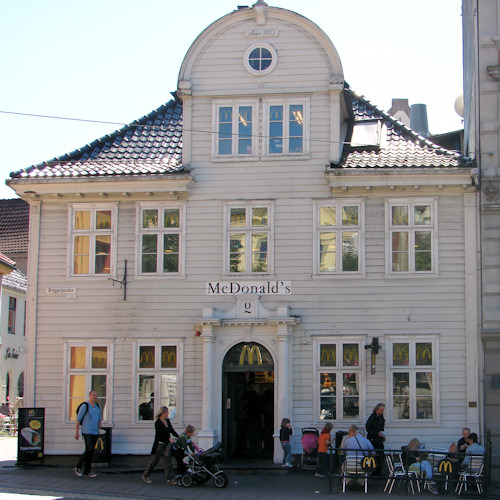 | Every place has a McDonald's. At least this one tries to be a good neighbor to the medieval buildings surrounding it. |
| Return Home |


